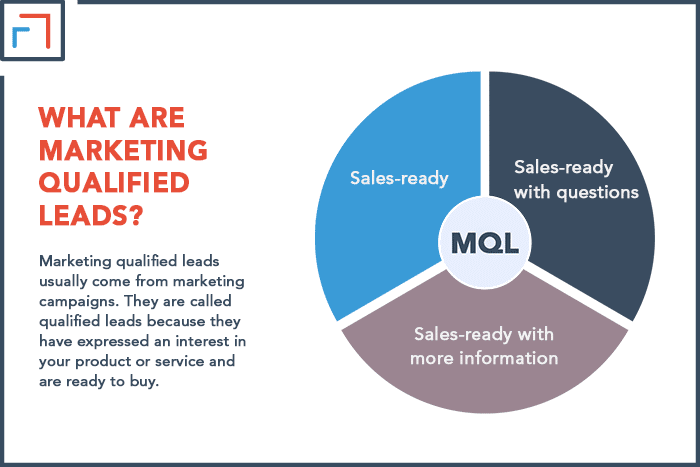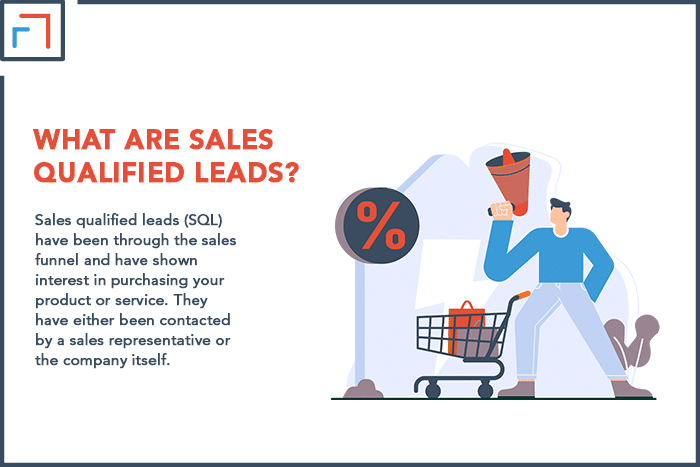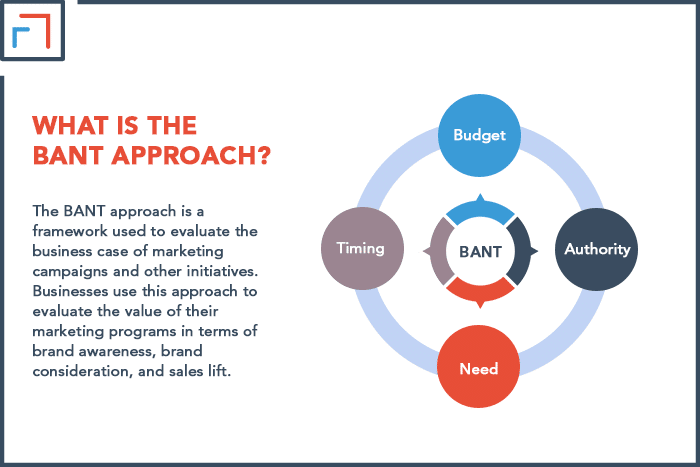Part of the sales process involves qualifying your leads. You can’t sell your product to everyone, so you need to identify the leads with the highest potential for converting.
Marketing Qualified Leads (MQL) and Sales Qualified Leads (SQL) are among the main types of qualified leads. They can be identified with the Budget, Authority, Needs, and Timing (BANT) approach. MQL prospects are willing but not ready to buy, while SQLs have been evaluated as likely to buy.
In a sales process, it’s important to understand the needs of your target audience. You’re on your way to success if you can properly identify your best leads and meet their needs. Learning about MQL, SQL, and the BANT method can help you do this.
MQL, SQL, and BANT Basics
If you’re a marketer, you may be familiar with the acronyms MQL, SQL, and BANT. But what do they mean, and how do they relate to each other?
MQL stands for Marketing Qualified Leads and refers to people that are interested in your product or service and want to learn more about it.
An MQL is a lead that your sales team wants to talk to.
These people meet your target customer profile, have expressed interest in your product or service, and have agreed to speak with a salesperson.
SQL stands for Sales Qualified Leads and describes people who have already shown interest in your product or service and are ready to buy.
They are people who meet all your criteria or who have purchased from you in the past.
An SQL could also be a lead who has filled out a lead form on your website. BANT is an acronym for Budget, Authority, Needs, and Timeline.
It’s a model used by many companies when qualifying leads before making contact with them.
To turn those MQLs into SQLs, you’ll need to determine how much money they have for your product and what kind of authority they have to make a purchase.
After determining these factors, you’ll need to use that information to develop a sales strategy for each potential client.
What Are Marketing Qualified Leads?
Marketing Qualified Leads (MQL) are leads that have been vetted by a sales rep and deemed ready for follow-up. When a lead is defined as an MQL, the sales team can set up meetings with them instead of wasting time following up with people who might not be interested.
Businesses always want to ensure they’re getting the best ROI possible. One way to do that is by only sending your sales team the leads that are ready to buy.
Marketing aims to create awareness and interest in your product or service. The first step in this process is to generate leads.
Marketing qualified leads usually come from marketing campaigns.
They are called qualified leads because they have expressed an interest in your product or service and are ready to buy. Marketing-qualified leads can be:
1. Sales-ready
This type of lead is ready to buy immediately and is looking for a quote from you on your product or service.
2. Sales-ready with more information
Some prospects need more information before making a buying decision.
For example, they may want to know about the financing options for your product or service before investing in it.
3. Sales-ready with questions
Some prospects will have questions about the price of your product or service before they’re ready to make a buying decision.
These leads can be handled by sales reps who can answer their questions and prepare them for a purchase.
In addition, marketing-qualified leads (MQL) go beyond expressing interest in your product or service.
They are your target audience who have the budget to buy your product.
It is an important distinction because it means they meet all of the criteria you established as a business owner when you created your marketing plan.
If you’re not getting enough MQLs, then there may be a problem with your lead generation strategy.
Your Marketing Qualified Leads (MQL) describe qualified leads generated from your marketing efforts. They are more likely to convert into sales than non-qualified leads.
Furthermore, the quality of your MQLs depends on how well you’ve segmented your audience.
It also depends on how much effort you’ve put into creating engaging content and lead-nurturing programs.
If your marketing automation tool allows you to track conversions, it should provide information about the number of MQLs generated by each campaign.
It should also show the conversion rate of each campaign and the average order value per lead.

How to Determine Marketing Qualified Leads?
To determine a marketing qualified lead, you must first define the criteria of your ideal customer. Start by setting up a database that can track lead activity. Identify those who have shown interest in your company by entering their contact information into the database.
The first step in the marketing qualified lead process is determining whether the lead is qualified.
The qualification process usually begins with a salesperson who is trained to ask questions that will help determine if the lead is qualified or not.
Next, create fields for each type of information about the leads, such as their name, address, phone number, and email address.
Create fields for each type of action taken by the leads. These actions could include clicking on an ad or filling out a form.
You should also mark all leads’ records as “not ready” if they do not meet your criteria for being considered MQLs at this point.
This list could be helpful in the future if you want to focus your efforts on a specific group.
The qualification process should be easy, but what happens when a lead comes through that you aren’t sure about?
Don’t ignore your unqualified leads; they can give you valuable information.
You need to reach out and ask them questions so you know where they are in their customer journey and what their interests are.
This will help you determine whether they’re interested in your product or service and will give you valuable information that can help you better market your product or service down the road.
What Are Sales Qualified Leads?
Sales qualified leads (SQL) have been through the sales funnel and have shown interest in purchasing your product or service. They have either been contacted by a sales representative or the company itself.
These are leads that have been pre-qualified for their potential to buy. An SQL is not just anyone who is interested in your product.
They’ve already shown a degree of interest and commitment, even if it’s downloading a white paper or starting a free trial.
The goal of identifying an SQL is to streamline the sales process and stop wasting time on unqualified leads.
If you’re getting sales-qualified leads from your website, then you know that people are interested enough in what you offer to provide their contact information.
It means that they’re at least open to the idea of buying from you — which means they’re likely to convert into customers sooner or later.
By focusing on quality over quantity, SQL identification allows you to spend more time talking with customers who are actually interested in buying.
Your SQL can be in the sales-ready contact or prospect categories. The former are people who have expressed interest in buying your product or service.
You might have contacted them through advertising or sent them an email with a link to your landing page.
You know they’re interested because they have taken a specific action that indicates they’re ready to buy (like clicking on a link).
Those in the prospect category are not yet ready to buy but have shown interest in your product or service by filling out a form on your website or giving you their name and contact information.
These prospects are still in the early stages of the buyer’s journey and may need additional education before becoming sales-ready contacts.

How To Find Sales Qualified Leads?
Sales qualified leads are the basis of any company. Without them, your sales team will not have good leads to work with. The best way to find sales-qualified leads is to use a CRM system with built-in features that allow you to track and manage the entire sales process.
A CRM system is an essential tool in today’s business world.
It allows you to keep track of all of your contacts and store important data about each customer’s history with your company.
This information can include things like past purchases, contact information, notes about meetings and phone calls, and so forth.
You can set up email alerts so that when someone fills out a form on your website, you will receive an email alert.
It also might be useful to set up notifications for when people download one of your ebooks or whitepapers.
It’s essential to add notes next to each contact so that when they fill out a form on your website or create an account on social media, you’ll know who they are.
You will not have to search through your contacts one at a time!
Selling online is a numbers game. You need to find many people who are interested in your product or service and then reach out to them individually.
You can’t just ask everyone who visits your website if they want to buy from you — that’s spammy.
Instead, you need to find prospects who have already shown interest in what you’re selling.
You can also find sales qualified leads for your business through content marketing, social media marketing, and search engine optimization (SEO).
How to Differentiate SQLs from MQLs?
SQLs and MQLs are two different types of leads. Although both are used in the sales process, they serve different purposes.
An SQL is a lead that has been qualified by the sales and marketing departments as a potential customer.
An MQL is a lead that has been identified as being interested in your product or service through digital marketing efforts such as SEO, SEM, content marketing, and email marketing.
These two kinds of leads fulfill different goals and expectations from companies that want to engage with them.
The main difference between SQLs and MQLs is that the former are already qualified leads who have been identified by sales teams as potential customers.
They may already have had conversations with you about their needs and wants, so it’s important for you to be prepared with answers when they ask for more information.
MQLs are people who have expressed an interest in your brand but haven’t necessarily reached out to ask questions or request more information.
Unfortunately, it means that they’re not ready to buy anything from you — at least not yet! SQLs are best for helping you close deals.
They’re identified by salespeople who are responding to leads or existing customers, and they’re used for cold calling and lead generation.
MQLs, on the other hand, are designed to generate interest in your product or service.
They’re usually defined by marketers and are used as part of a marketing campaign.
What is the BANT Approach?
The BANT approach is a framework used to evaluate the business case of marketing campaigns and other initiatives. Businesses use this approach to evaluate the value of their marketing programs in terms of brand awareness, brand consideration, and sales lift.
BANT stands for Budget, Authority, Need, and Timing, which are all important considerations when developing a marketing strategy:
Budget: Is there enough budget to support this strategy? It’s essential to understand how much money you have available before proceeding with a new initiative.
If you don’t have sufficient funds, it might be better to direct resources elsewhere until more money becomes available.
Authority: What is your level of authority within the organization? Can you make decisions on your own, or do you need approval from others before moving forward?
Need: Is there an existing need for what you are proposing?
You don’t want to waste time and resources on something that doesn’t provide value to customers or the company.
Timing: When is the best time to launch this initiative? The timing of your launch will impact its success rate because people may not be receptive at that time.
The BANT approach is a standard process for evaluating marketing initiatives.
The framework was developed to help you direct your advertising and marketing efforts toward your ideal customer.
It’s a simple process that helps you identify the right people to market your products or services to.
It also allows marketers to prioritize strategies and tactics based on how they will impact the business.

Final Thoughts
When you’re selling a product or service, you want to ensure you’re talking to the right people.
You also want your marketing efforts to have the highest possible ROI. In addition, your salespeople shouldn’t waste time chasing after the wrong leads.
That’s why it’s important to have a process in place for qualifying leads before they get passed on to the sales department.
Both SQL and MQL leads are helpful for businesses because they can lead to higher conversion rates and customer interest.
The BANT approach is an excellent way to develop and implement different marketing strategies.
If done correctly, it will make the sales process easier for your leads and your marketing team.
